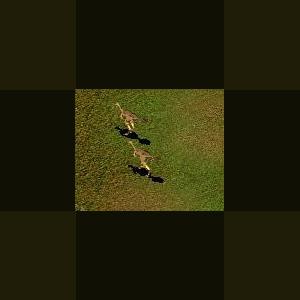About This File
The Bambiraptor skeleton was discovered in 1995 by 14-year-old fossil hunter Wes Linster, who was looking for dinosaur bones with his parents near Glacier National Park in Montana. Linster told Time Magazine that he uncovered the skeleton on a tall hill and was amazed at his discovery. "I bolted down the hill to get my mom because I knew I shouldn't be messing with it", he said. The bones that Linster discovered on that hilltop led to the excavation of a skeleton that was approximately 95 percent complete. Because of its completeness Florida Paleontology Institute Director Martin Shugar compared it to the 'Rosetta Stone' that enabled archaeologists to translate Egyptian hieroglyphics. Yale paleontologist John Ostrom, who reintroduced the theory of bird evolution from dinosaurs after his 1964 discovery of Deinonychus in Wyoming, agreed, calling the specimen a "jewel", and telling reporters that the completeness and undistorted qualities of the bones should help scientists further understand the dinosaur-bird link. The specimen is currently housed at the American Museum of Natural History, New York.
During the conference where Bambiraptor was first introduced, the dinosaur reconstruction specialist Brian Cooley portrayed Bambiraptor as having feathers, despite the fact that no feathers were found with the fossil itself. His decision was influenced by the fact that because Bambiraptor within a cladistic analysis was a member of a group, Paraves, that contained feathered true birds and that was the sister taxon of Oviraptorosauria, a group that also had feathered forms (e.g. Caudipteryx), Bambiraptor most likely had feathers too due to phylogenetic bracketing. Most paleontologists support Cooley's view, and subsequent discoveries confirmed that small dromaeosaurid dinosaurs like Bambiraptor were fully covered in feathers.
Research done at Lamar State College in Orange, Texas has indicated that Bambiraptor may have had opposable front claws and a forelimb maneuverability that could reach its mouth. This would have given the animal the ability to "hold" food in its front limbs and place it in its mouth, in a similar manner to some modern-day small mammals.
Bambiraptor skull in the Oxford University Museum of Natural History.Bambiraptor had a brain size in the lower range of modern birds. Because of its enlarged cerebellum, which may indicate higher agility and higher intelligence than other dromaeosaurs, David A. Burnham has hypothesized that Bambiraptor feinbergi may have been arboreal. Life in the trees may have required evolutionary pressure that resulted in a larger brain. Burnham also offers an alternative hypothesis that a larger brain could be selected for as a result of hunting more agile prey items such as lizards and mammals. Bambiraptor had the largest brain for its size of any dinosaur yet discovered, although the brain size may be due to its age, because juvenile animals tend to have larger brain-to-body ratios compared to adults. It also had very long arms and a well-developed wishbone.



Recommended Comments
There are no comments to display.
Create an account or sign in to comment
You need to be a member in order to leave a comment
Create an account
Sign up for a new account in our community. It's easy!
Register a new accountSign in
Already have an account? Sign in here.
Sign In Now